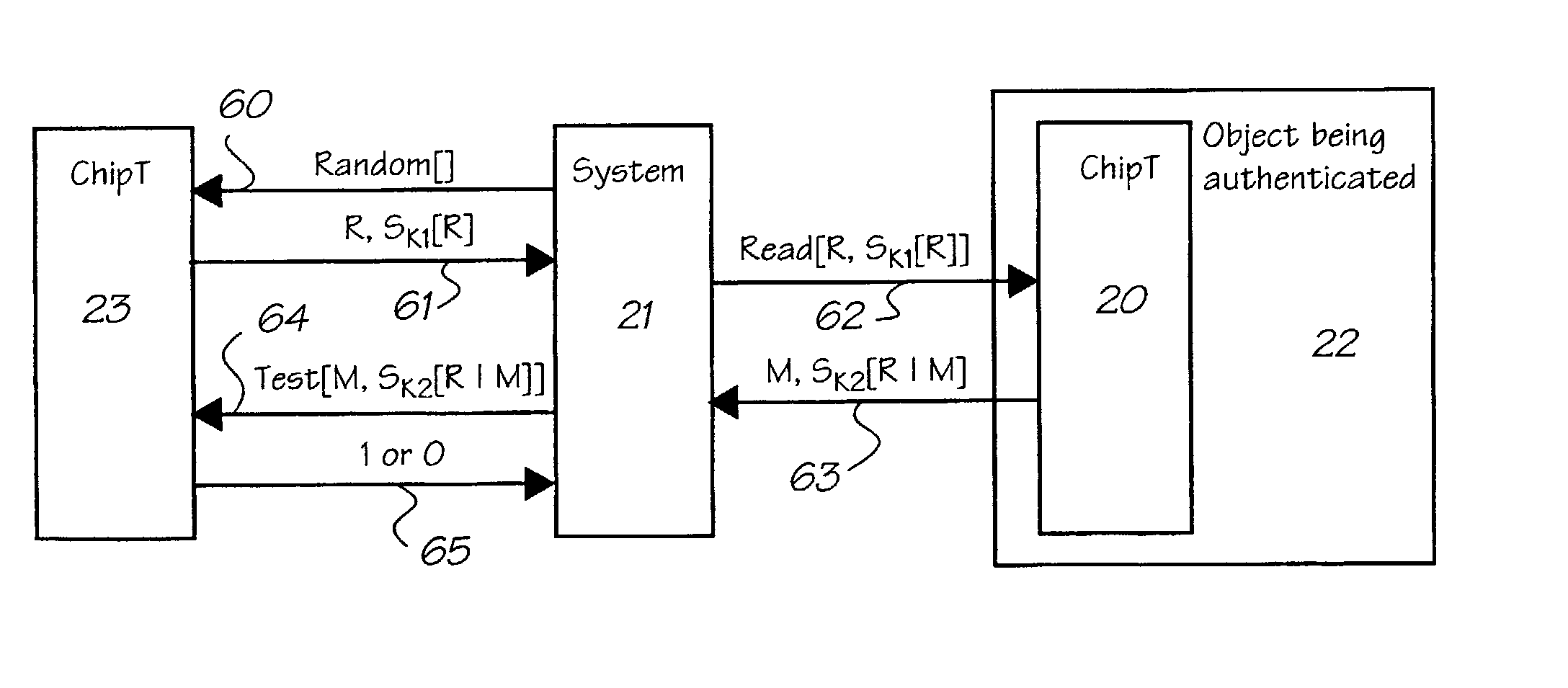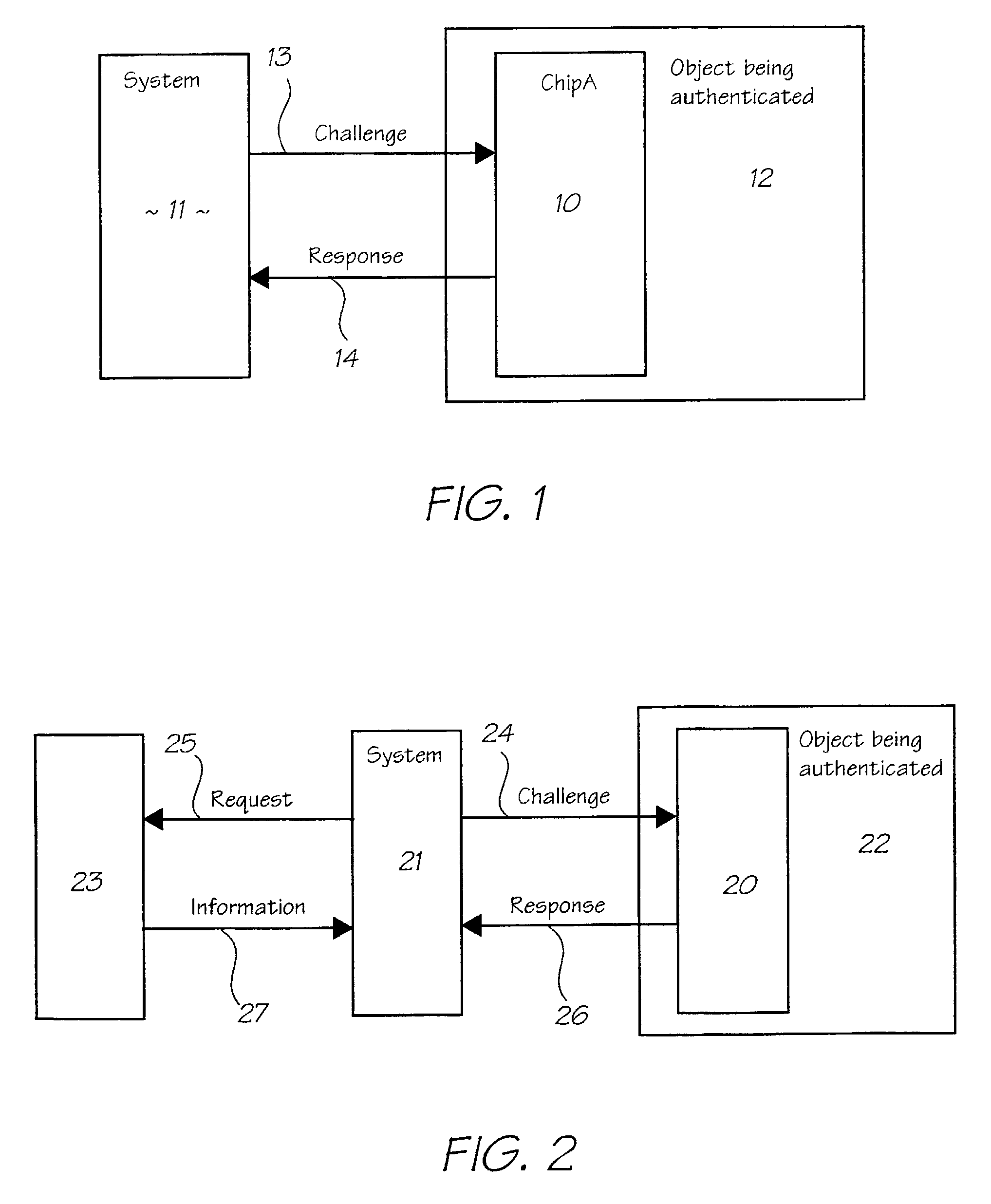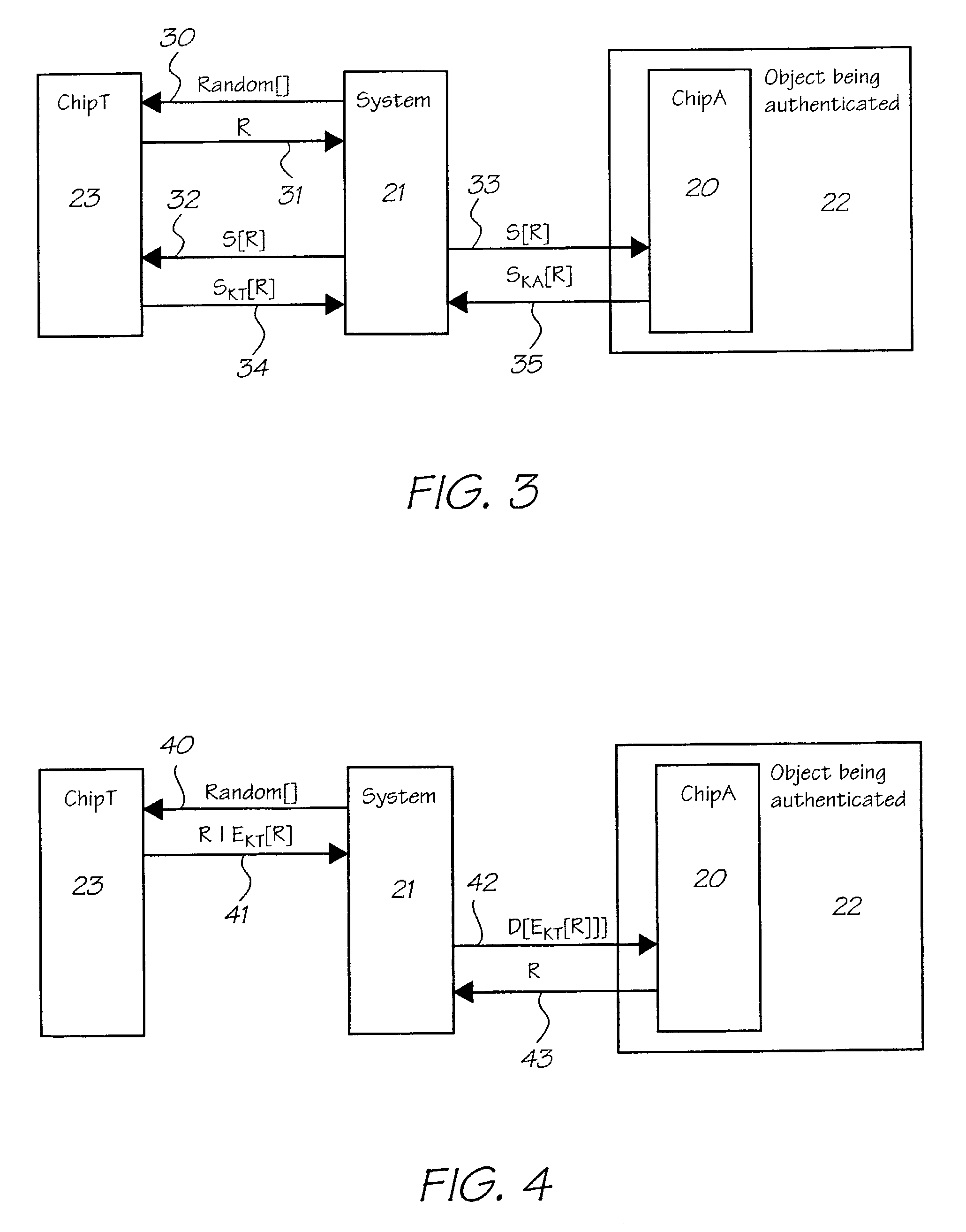However this does not stop home refill operations or clone manufacture.
For example, poorly filtered ink may clog print nozzles in an ink jet printer.
Of course if it is politically sensitive for the
combat unit's position to be known even after the war, K may have to remain secret for a very long time.
Many of these are insecure, in that modern
cryptanalysis techniques (see Section 3.8) can successfully
attack the
algorithm to the extent that K can be derived.
The strength of an
algorithm is difficult to quantify, relying on its resistance to cryptographic attacks (see Section 3.8).
By contrast, a secret
algorithm that has not been scrutinized by cryptographic experts is unlikely to be secure.
However, the more keys there are, the more keys have to be tried.
We will ignore most historical symmetric algorithms on the grounds that they are insecure, especially given modem computing technology.
An initial examination by Kaliski and Yin [43] suggested that standard linear and differential
cryptanalysis appeared impractical for the 64-bit blocksize version of the algorithm.
The biggest drawback of IDEA is the fact that it is patented (U.S. Pat. No. 5,214,703, issued in 1993), and a
license must be obtained from Ascom Tech AG (Bern) to use it.
The security of asymmetric algorithms is based on the difficulty of one of two problems: factoring large numbers (more specifically large numbers that are the product of two large primes), and the difficulty of calculating discrete logarithms in a finite field.
Factoring large numbers is conjectured to be a hard problem given today's understanding of mathematics.
The problem however, is that factoring is getting easier much faster than anticipated.
Most are impractical to implement, and many generate a very large C for a given M or require enormous keys.
Still others, while secure, are far too slow to be practical for several years.
All of the algorithms have a problem in terms of key selection.
A random number is simply not secure enough.
However the DSA standard [29] does not permit values of p larger than 1024 bits (p must also be a multiple of 64 bits).
There are three main problems with this kind of simplistic protocol.
Thirdly, if C impersonates A, then B will give the
password to C (thinking C was A), thus compromising the
password.
Using a copyright text (such as a haiku) as the
password is not sufficient, because we are assuming that anyone is able to copy the password (for example in a country where
intellectual property is not respected).
This is provably equivalent to the assumption that factoring large integers is difficult.
Without the key K, it is computationally infeasible to obtain M from EK[M].
There are a large number of issues concerned with defining good random number generators.
If i is large, it may not be practical to wait for i iterations.
When first defined, the
primary problem with the BBS generator was the amount of work required for a single output bit.
The algorithm was considered too slow for most applications.
However, there are problems in selecting a good p and q, and a good seed x. In particular, Ritter in [68] describes a problem in selecting x. The nature of the problem is that a BBS generator does not create a
single cycle of known length.
Because collisions do exist, most applications require that the hash algorithm is preimage resistant, in that for a given X1 it is difficult to find X2 such that H[X1]=H[X2].
However, as described in [20], it is an open problem whether a collision-resistant
hash function, in the ideal sense, can exist at all.
This means that MD5 should not be used for compression in
digital signature schemes where the existence of collisions may have dire consequences.
Although there have been no successful attacks on RIPEMD-160, it is comparatively new and has not been extensively cryptanalyzed.
A one-way
hash function is not sufficient protection for a message.
This would require the
processing of at least 264 blocks under H, an impossible task in any realistic
scenario (for a block length of 64 bytes this would take 250,000 years in a continuous 1 Gbps link, and without changing the secret key K all this time).
There are a large number of issues concerned with defining good random number generators.
Although Klapper has recently shown [45] that a family of secure feedback registers for the purposes of building key-streams does exist, he does not give any practical construction.
If however, the
random number seed generator is compromised, and an attacker is able to calculate future “random” numbers, it can leave some protocols open to
attack.
Regardless of the algorithms and protocol used by a security
chip, the circuitry of the
authentication part of the chip can come under physical
attack.
They work against the protocols and the security of the algorithms and random number generators.
On a
system using an embedded authentication chip, it is generally very difficult to prevent chosen
plaintext attacks since the cryptanalyst can logically pretend he / she is the system, and thus send any chosen bit-pattern streams to the authentication chip.
However, the more key possibilities there are, the more keys must be tried, and hence the longer it takes (on average) to find the right one.
Of course, an attack may guess the key on the first try, but this is more unlikely the longer the key is.
Such a
machine would take 20 hours to break any DES code.
With a long enough key length, a
brute force attack takes too long to be worth the attacker's efforts.
Unfortunately, every additional
qubit halves the relative strength of the
signal representing the key.
This rapidly becomes a serious impediment to key retrieval, especially with the long keys used in cryptographically secure systems.
As a result, attacks on a cryptographically secure key (e.g. 160 bits) using a
Quantum Computer are likely not to be feasible and it is extremely unlikely that
quantum computers will have achieved more than 50 or so qubits within the commercial lifetime of the authentication chips.
The challenge for finding a substitution block is that such blocks are a sparse subset of all possible blocks.
If the messages sent to the chip are somehow predictable, rather than effectively random, then the clone manufacturer need not provide a complete
lookup table.
However some recent algorithms developed in secret have been broken because the developers had not considered certain styles of differential attacks [91] and did not subject their algorithms to public scrutiny.
It may be that there are problems in the authentication protocols that can allow a bypass of the authentication process altogether.
Using a copyright text (such as a haiku) as the key is not sufficient, because we are assuming that the
cloning of the chip is occurring in a country where
intellectual property is not respected.
There would usually have to be a clear
advantage for the
consumer to undertake such a modification, since it would typically void warranty and would most likely be costly.
However,
slicing the chip to this level without discharging the gates is probably impossible.
If the
signal is part of the key, then that part is compromised.
In most cases such an error is more likely to adversely affect the chip (e.g. cause the
program code to
crash) rather than cause beneficial changes which would reveal the key.
Instead of creating a
glitch in the
clock signal, attackers can also produce glitches in the power supply where the power is increased or decreased to be outside the working
operating voltage range.
If the target instruction is chosen carefully, it may result in the key being revealed.
Test circuitry is often disabled once the chip has passed all manufacturing tests, in some cases by blowing a specific connection within the chip.
 Login to View More
Login to View More  Login to View More
Login to View More 


